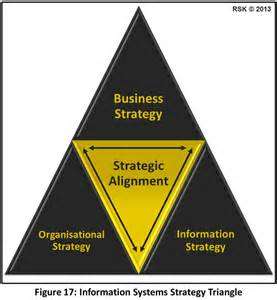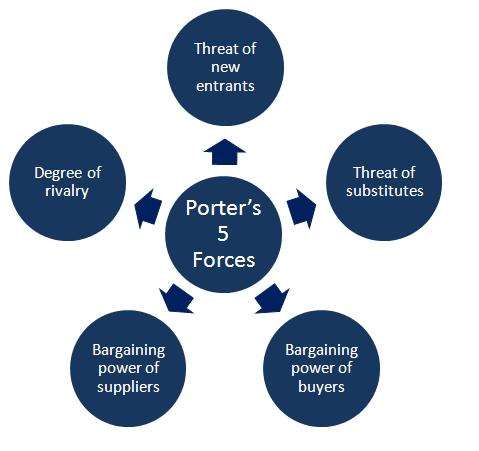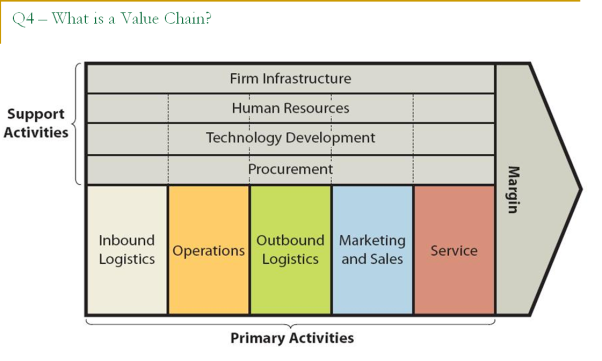Strategic Management of Information Systems
A literature review of the strategic use of information systems/technology in the modern business environment
Lauren Holland
B00059572
Department of Business,
School of Business & Humanities,
Institute of Technology, Blanchardstown,
Dublin 15.
[Word Limit for Assignment: 2,000Actual Word Count: 2150 ]
Bachelor of Business studies
Information Systems Management
15/03/17
Contents
The integration of IS to gain competitive advantage
Porter’s Generic Strategies Framework
Porters Value Chain a process view of the organization
Risks of information resources in gaining advantage
To run a successful business in this modern day, todays management teams need to combine business skills along with a substantial understanding of information systems and the opportunities and benefits that this knowledge of information systems brings to a business. Understanding the basic concepts is a necessity for organisations in the world of business today. Understanding what Information system suits your organisation along with being able to develop and manage an efficient business information system is a huge advantage for an organisation. (Pearlson & Saunders) Information systems are part of almost every aspect of business. (Pearlson & Saunders). Everyone involved in the management of a business need to understand how business and information systems function and operate together.
(Pearlson & Saunders)
Very often, it is evident that managers claim ignorance of IS issues without losing prominence among their peers. This doesn’t tend to happen regarding other functions of the business such as marketing or finance, as a lack of knowledge in these areas would earn colleague’s contempt. Business managers have no issue in participating in most company decisions been those that are outside their regular expertise, IS seems to be the one exception. This approach amongst business managers have been traceable to the historic role that IS has obtained in businesses. In the past technology was thought of as an administrative overhead and treated a support. It was not valued as a factor in significant management decisions. Today’s environment is extremely different as if that view was present in organizations it would cost them market share and could lead to the failure of an organization as that is how critical IS systems are to organizations now.
                     (Pearlson & Saunders)
“employing information systems strategically to achieve organisational goals. Taking a problem-solving approach, Business Information Systems looks at information systems theory within the context of the most recent business and technological advances.” (Pearlson & Saunders)
Information systems can be the combination of technology, people and the process that an organisation uses to create and manage information (Saunders, 2013). Most the issues organisations experience and face in the modern business world are either triggered by IT or are a ramification of it. Information systems are continuously on the carping path of a business change programme (Feeny, 2000). Organizations need to optimally can use IS and information resources to influence competitive forces. With the realisation of this it has become apparent that the strategic management of IS has never been more critical to a business’s success (Peppard, 2010 and 2001). It is important for Information systems in organisations to be treated as a critical strategic resource, although this is not always the case and can be where organizations weaken themselves. It is the key enabler of organisational change, it is essential for businesses to be able to change with the economy and the environment in today’s business world that is constantly evolving. An issue in organizations gaining competitive advantage by using IS is the lack of participation by managers in IS decisions. IS is a tool business managers can use to fight challenges from competitors, it can facilitate or constrain opportunities and possible new strategies for businesses. It is evident that understanding the basic concepts about using and managing information systems is valuable and worth investing the time in.
“The knowledge gap – the lack of understanding among executive management of the nature and role of IS within an organisation, which is often exacerbated by the prevalence of technology orientated language unknown outside of the IS domain” (Stephens 1993). The issue of these symptoms of disconnect then prevail into many consequences thus in the failure of the information systems operation to build a common vision of information systems throughout the organisation. This can also be from senior managements failing to engage with the information strategy during the development. (jones, 1995) A significant issue with Information systems is that it is generally considered as a cost rather than a strategic asset. Organisations suffer because they find difficulties in transforming good ideas into action. The creation of silo projects across the organisation that are not integrated into an overall corporate strategy (Kaarst-Brown 2005).
IS is a useful tool to fight competitive challenges. Competition arises from both anticipated and unanticipated areas, which is why general managers tend to be in the best position to be able to identify a developing threat and can apply IS effectively to fight or handle ever changing competitive challenges. (Pearlson & Saunders). General managers often are involved in demonstrating and comparing how their systems, technology programmes and products compare to their competition. An understanding of IS and how it integrates and supports the competitive view for the business. (Pearlson & Saunders)
Businesses have had to redesign existing business models that they had in place with the customer pull and power of social media. Businesses must account and adapt to the constant growing and changing social media outlets. Social media facilitates the ever-powerful voice of consumers, and businesses goals along with understanding the proficiency of the company can create a competitive advantage and change the
businesses mustn’t make the mistake in not listening. Businesses are constantly looking for ways to redesign the customer experience, customer’s interactions with the business are the focus of many managers with IS enabling and enhancing the interaction between the organization and the customer. Using social IT facilitates new and sometimes more rooted relationships with customers while attracting the social demographic of customers. Business are learning how to integrate and leverage these aspects into their business models and how to construct new business models that facilitate these variables.
IS strategy Triangle
The information systems strategy triangle relates the business strategy of an organization with IS strategy and organizational strategy. This triangle suggests that successfully organizations have an overriding business strategy that influences both the organizational strategy and IS strategy. Successful organizations have the three strategies well balanced. Strategically designing the organization strategy and the IS strategy of a company to correlate their business strategy. IS strategy can impact and be impacted by changes in organizations business and organizational strategies. Each attribute on the triangle can impact and be impacted by the other two. In the scenario of a firm’s business strategy being designed in such a way that it uses IS to gain strategic advantage, it will mean that the authority position in IS could only be supported by continued innovation. The three strategies must constantly be adjusted. (Pearlson & Saunders) IS strategy always having consequences so it is crucial to consider the business and organizational strategies when designing IS formation. Organizations will only reach success if each aspects of the triangle are specifically tailored.
(Pearlson & Saunders)

Porter’s Generic Strategies Framework
“Michael Porter identified three primary strategies for achieving competitive advantage and sustaining competitive advantage.” (Pearlson & Saunders) The issue with Porters model and the variants is that the rate of change is not as easily managed and sustained anymore. Organizations sell their goods/services in a highly competitive marketplace, Porters framework aids managers in understanding their choice of strategy and how it enables them to achieve advantage.

Porters Value Chain a process view of the organization
The value chain draws on how information systems add value to the fundamental movements of an organizations internal operations and supporting that and of its customers and the other attributes of its supply chain.

Information resources can be recognised as assets or capabilities. information Resources can be identified as technology, data, people and the processed that exist in an organization.
Analysis and findings
Higher levels of management and CEOs that manage the management teams continue to condone disregard in this area relative to other business functions. Some consequences of the lack of collusion between the two are; the overspending on underperforming projects, Miss-alignment of resources, Misalignment of functional areas and organisational systems, Ongoing failure of IS for the organisation, organizations goal under-achieved, Organisation is susceptible to the competitive environment and risk of company failure. These are some of the consequences businesses are allowing themselves to become susceptible to by not closing the Gap and integrating the two.
An organisation needs to have valuable and rare resources acquired that they can leverage to ensure a superior resource position to enable them to attain competitive advantage. A valuable resource is a resource that allows a firm to operate more efficiently or effectively. It becomes a rare resource when other organizations don’t possess it and it is unique to a specific organization. Being able to have a rare resource optimizes the possibilities of success for an organization and provides opportunity in market share. For example, customers expect banks to have ATMs in a vast amount of convenient locations, nowadays a bank wouldn’t consider operating without having ATMs swell, therefore this is not a rare resource and do not offer a competitive advantage. (Pearlson & Saunders)
A lot of organizations that invested in information systems were naïve in thinking that once they obtained a competitive advantage that they would maintain it long term. To sustain an organizations competitive advantage long term there needs to be constant innovation and the organization needs to protect itself against resource imitation, substitution, or transfer. (Pearlson & Saunders) Often when companies within an industry imitate other company’s successful systems, this often happens with logistic models within a company’s supply chain. The self-scan self-service checkouts in supermarkets was at first a novelty and a competitive advantage for one, but then imitations were vastly created by many supermarkets making them become almost an expectation in the eyes of the customer. When competitors build similar systems, organizations lose advantages they may have attained from there is and competition within an industry driven by forces that had existed before the new technology. (Pearlson & Saunders) Social IT platforms are now the most rampant evolution of applications, processes and strategic opportunities in a new evolution for organizations striving to adapt there is strategies for their internal and external circumstances.
Managers invest a lot of time trying to control and monitor elements that can influence their organizations competitive environment, to ensure they are aware of all elements they must strategically look at it from different views. Three views can enable a manager to align IS strategy with the business strategy. The use of Porters five competitive forces to interpret the influences of the organizations competitive environment, along with the ability to alter the five forces to boost the firm’s status. The value chain to judge the operations internally and links in its supply chain. The value chain of the organization should then be assessed to decipher the opportunities available for an organization to gain competitive advantage. Finally focusing on the specific IS resources required to gain and sustain competitive advantage for the organization. The three views combined allow a manager a variance of perspectives hat it can identify strategic opportunities to apply to an organizations information resources.
(Pearlson & Saunders)
Risks of information resources in gaining advantage
When IS are used as the route to bolster advantage against an organizations competitor, management should be aware of the risks the organization may face. These risks can arise as demonstrating bad timing, customers are often not ready to use updated technology. Awakening a sleeping giant, implementing an IS can lead to encouraging a competitor with a broader scope and bigger advantage to implement the same with enhanced features and end up gaining the advantage instead of you. Implementing IS poorly, failing IS that had potential but results in being below par followed through and poorly implemented. These would usually be quite complex global systems. Failing to deliver what the user wants, systems that don’t meet the needs or the target market are susceptible to fail. These are just some of the risks an organization takes when using this approach and it is crucial for them to be cautious when implanting IS strategies.
Technology has become entwined with all the standard functions of organizations. IT is a critical resource for modern day businesses as it both supports and absorbs an important amount of an organizations resources. Similarly, the other three dominant types of business resources, people money and machines, it needs to be managed carefully Michael Porters Five Competitive Forces model presents a framework for discussing strategic advantage, and his Value Chain model explains calculated methods for businesses to how they can network processes to build strategic alliances. a company’s overall business strategy will drive all other strategies. IS links into all aspects of a business, IS is very much the foundation of a lot of supply chain models and is strongly linked into a company’s supply chain system. IT spends a major portion of corporate budgets therefore it is sensible that organizations safeguard it is being optimally used within company strategies to bolster their competitive advantage. As discussed there are many attributes in the process that IS is used by organizations to gain competitive advantage within its industry market.
Anonymous [online], Available from: <https://www.bing.com/images/search?view=detailV2&ccid=I89%2bvdmy&id=AC809F2D662E708CEB095115251C16EA18FF0EDD&q=the+information+systems+strategy+triangle&simid=607994055706674003&selectedIndex=2&ajaxhist=0> .
Bocij, P., Greasley, A. and Hickie, S. (2015) Business Information Systems: Technology, Development and Management for the e-Business
, 5th Ed: Pearson education.
Boddy, D., Boonstra, A. and Kennedy, G. (2008) Managing Information Systems Strategy and Organisation, third edition Ed: Pearson education.
Brian Dempsey. Lecture Notes [online], Available from: <http://moodle.itb.ie/mod/resource/view.php?id=146803> .
Dempsey, B. Lecture Notes [online], Available from: <http://moodle.itb.ie/mod/resource/view.php?id=146802> .
Keri E. Pearlson, Carol S. Saunders Strategic Management of Information Systems, fifth edition Ed: John Wiley & Sons Inc.
McNurlin, B.C. and Sprague, R.H.J. Information Systems Management in Practice, seventh Ed: prentice hall.
Robson, W. (1997) Strategic Management & Information Systems, second edition Ed: Pearson education limited.
Institute of Technology, Blanchardstown
Department of Business
I declare that the work I/We am(are) submitting for assessment by the
Institute examiner(s) is entirely my(our) own work, except where the
author or source has been duly referenced and attributed.
I/We confirm that this material has not been previously submitted for a
degree or any other qualification at ITB or any at other institution.
I/We further confirm that I/We have read and understood the Institute
policy on plagiarism in assignments and examinations (3AS08.doc) and
that I/We am/are not, so far as I/We am/are aware, in breach of any of
these regulations.
Name : Lauren Holland
Student ID : B00059572
Course : Bachelor of Business studies
Module : Strategic management of Information systems
Signed :
Date : 23/03/17